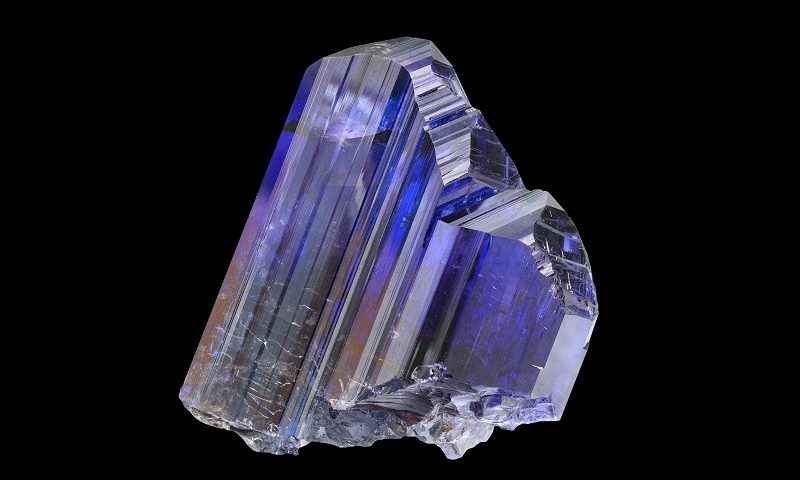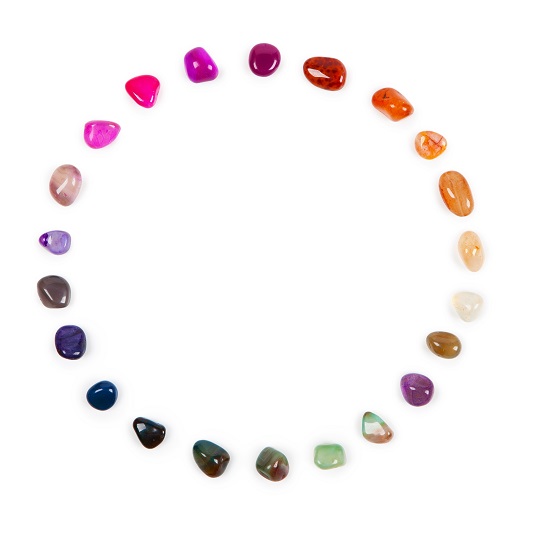Tanzanite gemstone

Egyptian Tomb Raiders: Curses and Mysteries
13th October 2017
Paraiba gemstone
27th October 2017A form of the calcium aluminium silicate known as Zoisite, Tanzanite is a beautiful blue precious stone. Typically, the mineral forms in prismatic crystals, varying in transparency from translucent to almost opaque. Tanzanite is a pleochroic gem; simply put, this can be described as a mineral that appears differ-ent colours when it is viewed from different perspectives, or under different sources of light. Due to this property, the stone can appear anything from a light violet-blue to a deep sea blue. The most favourable Tanzanite specimens are thought to boast a saturated blue colour in the centre with a slight hint of violet forming around the outer edge. While the stone naturally occurs in a variety of colours including blue, brown, yellow and purple, today, almost every piece of Tanzanite is heat-treated to produce the vibrant blue colouring popular in gemstone jewellery. In this article, we explore Tanzanite in more detail, discuss how to identify the precious gem, where it is commonly found and the healing properties it boasts.
How to Identify Tanzanite
While there are many vibrant blue gemstones out there, unlike most minerals of similar appearance, Tan-zanite is a pleochroic gem. This interesting property makes the stone fairly easy to identify. It is not un-common for tanzanite to appear a vibrant blue when viewed from one direction, and dramatically change to a deep shade of red when viewed from another. By experts, the stone is best identified by its refrac-tive index of 1.69 to 1.7, in conjunction with its relatively low density of 3.35. To the average eye, though, Tanzanite can be easily distinguished from similar stones by its perfect cleavage and uneven fracture, along with the clear pleochroic property that the gemstone typically exhibits.
Different Varieties of Tanzanite
As mentioned previously, Tanzanite varies in colour from sapphire blue to ultramarine. Under artificial light, the stone commonly appears to hold a violet hue, similar in appearance to amethyst. While there aren’t any specific different varieties of Tanzanite, the stone varies in size, appearance and overall quality depending on the individual specimen. While it’s pleochroism means that the colour has the potential to change dramatically when viewed from different directions, the variety of hues that the mineral exhibits tend to vary from stone to stone. Like with most gemstones, the highest value is held by minerals with the deepest colour saturation. Typically, pieces of Tanzanite over 5 carats hold the most vibrant colouring, making specimens of this category expensive and highly sought after.
Rarely, Tanzanite can be found with a cat’s eye appearance, formally referred to as chatoyancy. Due to their rarity, high-quality stones of this nature hold incredible value. With the exception of chatoyancy, when Tanzanite has visible inclusions the value typically decreases. The highest quality Tanzanite should be clean to the naked eye and boast an attractive lustre.
Commonly, raw Tanzanite holds a brow or yellowish tint. To rid the stone of this unfavourable colour and increase the vibrancy of the blue hue the mineral is heat-treated. While most saturated specimens have undergone the heat-treating process, very occasionally Tanzanite can hold the sought after appearance naturally. Unsurprisingly, stones of this nature carry with them a hefty price tag. Legally, gem traders have to disclose whether or not the stone has been treated, making it easy to distinguish between the two.
Where is Tanzanite Found?
Initially discovered in 1967, Tanzanite was first found deep within the hills of Tanzania, East Africa. Unfor-tunately, it remains unclear who made the first discovery of the mineral; some sources suggest that the stone was discovered Masai tribesman, Ali Juuyawatu, while others claim that the glory should go to Ndugu Jumanne Ngoma, instead. One thing we do know for certain though is that Tanzanite was given its name by the famous Tiffany & Co. After naming the gemstone, the brand heavily promoted it as being the next big thing, resulting in its sudden popularity within high-end jewellery.
To this day, the sole source of Tanzanite is Tanzania, East Africa. So far, the mineral has yet to be found anywhere else on earth, with the only deposit thought to be located in the Merelani Hills, just ten miles away from the Kilimanjaro International Airport.
Healing Properties of Tanzanite
Considered to be a highly spiritual stone, Tanzanite is often used within meditation with the hope of re-lating to other realms. In addition to encouraging calmness and inspiring passion, the vibrant gemstone is thought to facilitate communication, making Tanzanite ideal for those who struggle to voice their opinion. Traditionally, Tanzanite was used in Hindu belief systems, associated with the throat chakra, crown chak-ra, and brow chakra. With this in mind, the stone is thought of as being one for self-expression, creativity and higher consciousness. The deep blue hue of Tanzanite is thought to relate to it’s healing properties of faith, loyalty and respect, making the gemstone helpful within romantic relationships.
Physically, Tanzanite is believed to link to the pituitary gland, the thyroid gland and the mouth, making it beneficial for those suffering from an over/underactive thyroid, candida, and/or mouth ulcers. If you do experience ailments related to anything mentioned above, try wearing a delicate piece of Tanzanite around your neck, or purchasing a Tanzanite beaded bracelet to reap the benefits.
In Summary
Whether you are hoping to pick up a beautiful pastel piece of Tanzanite in the form of high-end jewellery, admiring it for its ultramarine hue and beautiful clarity; or you’re interested in using the stone for its heal-ing properties to encourage creativity and passion within your day to day life, purchase a piece of good-quality Tanzanite to experience the array of incredible benefits.




